African forest elephants are now considered critically endangered, and African savannah elephants endangered, are the Asiatic elephants safe? And are we killing one of the few hopes humanity has? A guide to what remains
The African savannah elephant has declined by 60% over the last 50 years, and the African forest elephant has declined by 86% over the last 31 years.
So how close are these species to disappearing? There are currently 415,000african elephants in the wild, spread across 23 countries.
Unfortunately, their situation is highly different on different parts of the continent. Botswana still supports 130,000 Savanah elephants, while Tanzania lost 60% of their elephants between 2009 and 2014 (though some reserves till have healthy populations), one place hit particularly hard was the Selous which 40 years ago had over 150,000 and currently hosts 15,000 elephants.
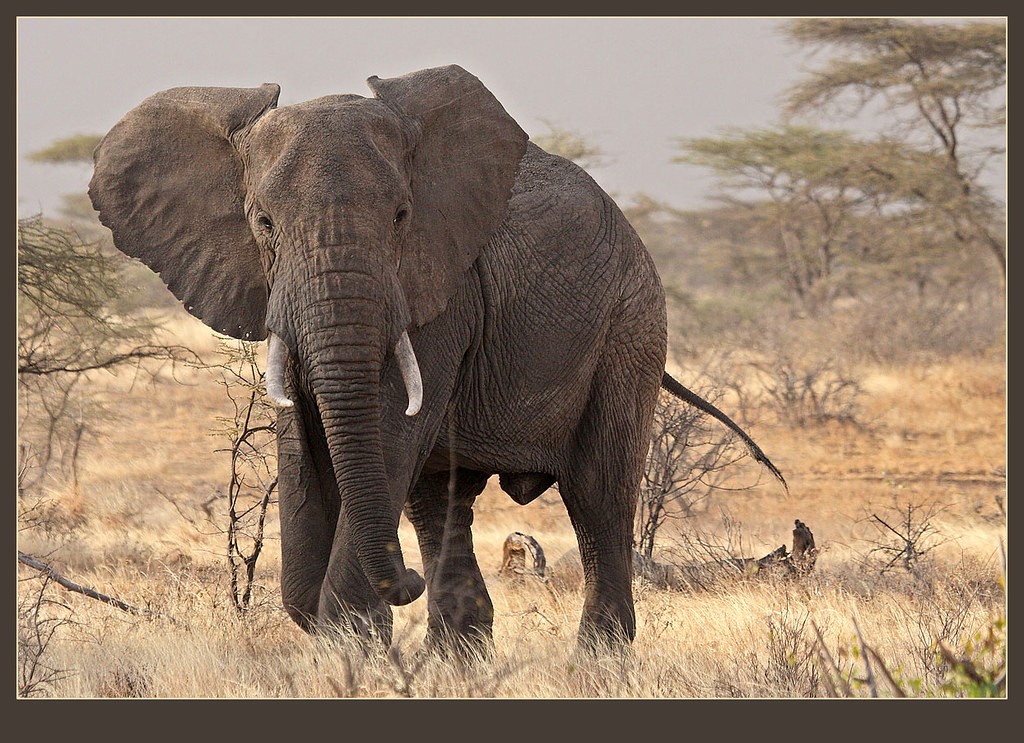
While the African forest elephant was only recognized as a separate species in 2021 (there has been much argument about its status), what is not in question is its horrific decline in numbers. Indeed finding a web page that gives you an accurate figure is hard work, This may well because one does not exist. There has been horrific population declines over recent years, and the density is incredibly varied across its range.
Unfortunately one thing is clear, in areas of the Congo rainforest where elephants have lost, the forest does less well. There are many plant species which rely on elephants to carry their seeds from from where they are dropped. As such, without forest elephants we are likely to loose many species of trees – to the extent that it might threaten the survival of the Congo rainforest itself.
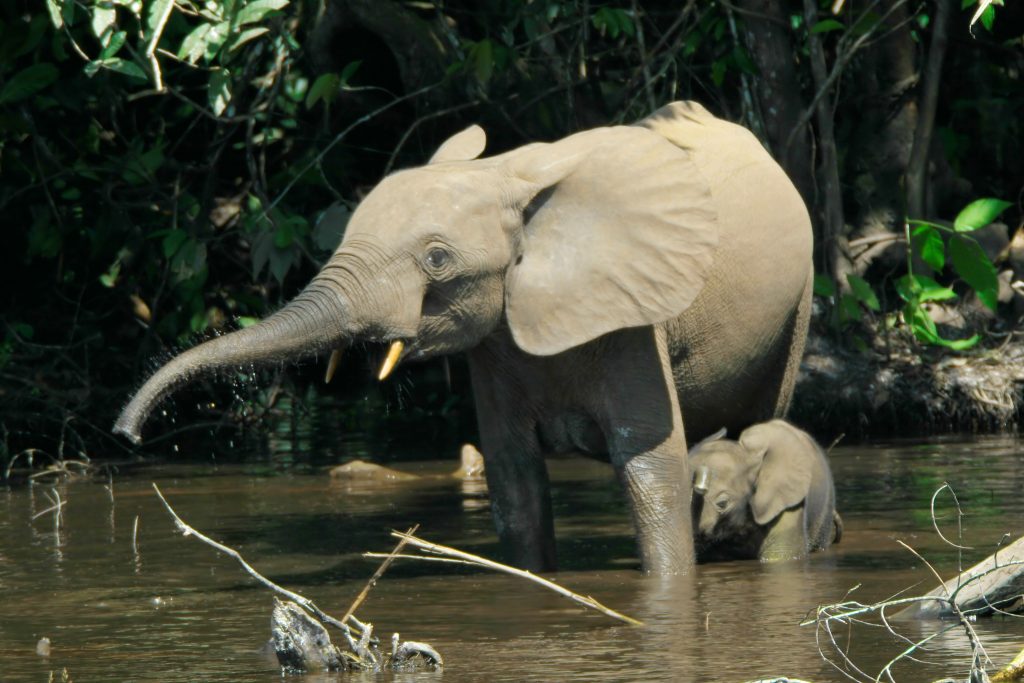
So how are Asiatic elephants doing? Unfortunately not great. There are 5 subspecies
First, the Indian elephant. This is the best known and most wide spread. Currently their Indian population is thought to be between 27,000 and 31,000, with between 10,000 and 14,000 across another 10 countries. While I am listing 4 subspecies these all look relatively similar.
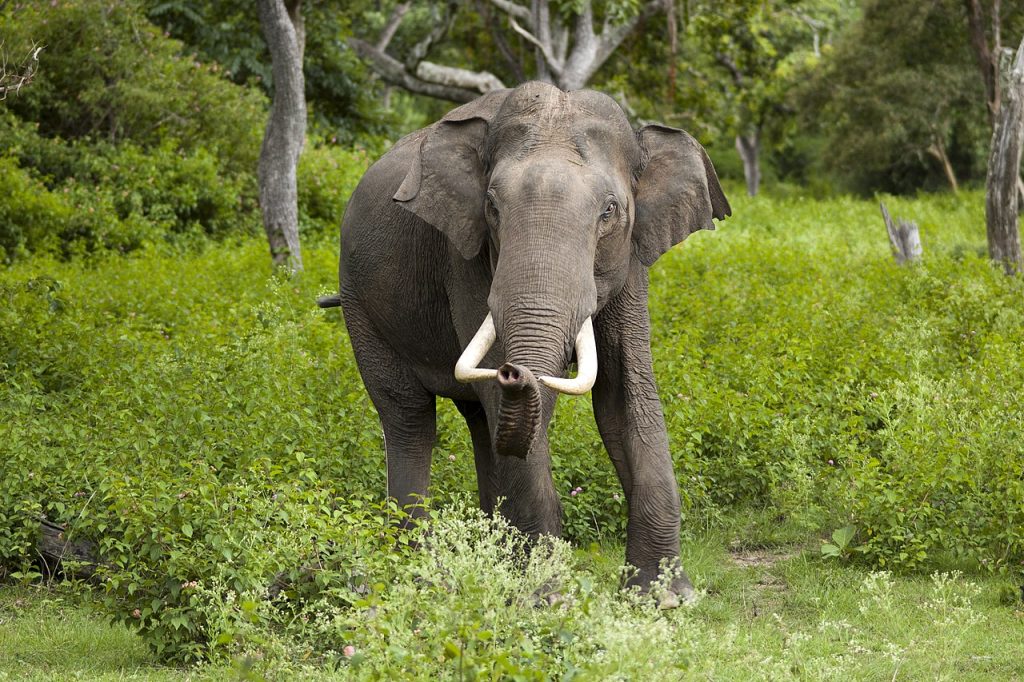
Borneo elephant – the most positive estimate, suggests that there are 1500 remaining in the rainforests of Borneo
Sumatran elephant 2400-2800
Sri Lankan elephant 7500
Syrian elephant – this species was lost as much as 1000 years ago, and occupied the western most part of the Asiatic elephant range.
As such what is clear, is that while African elephant populations are falling fast there is time to check this decline. The Asiatic elephant populations are far more in danger.
African Savannah
African Savannah animals
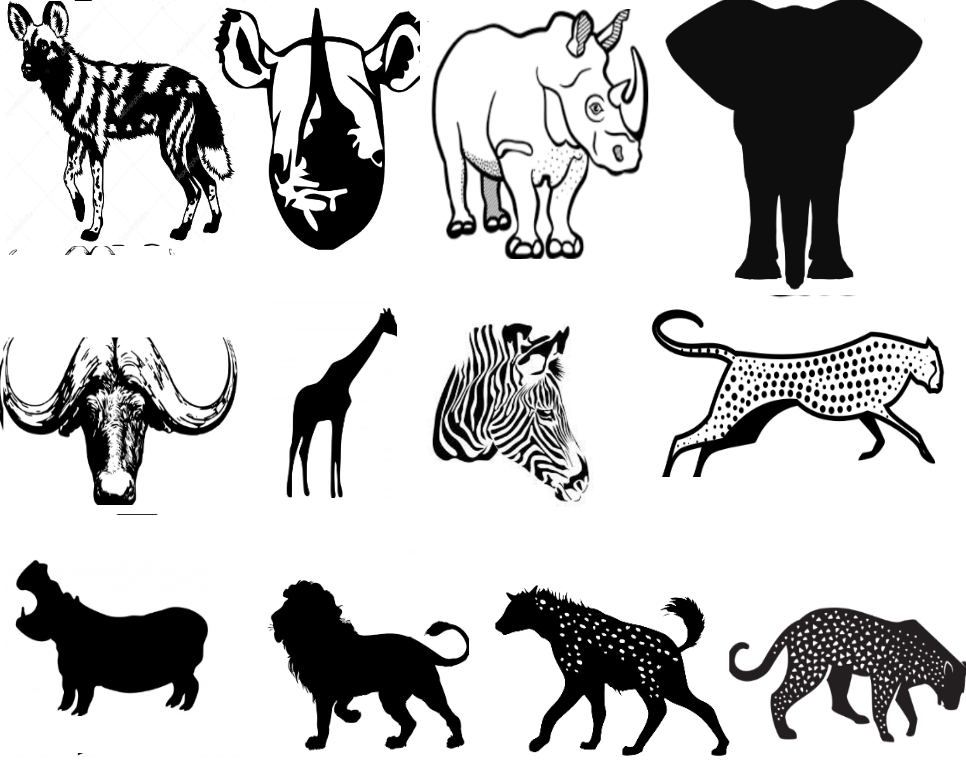
The aim here is not to give you the number of every species that exists in each reserve. Rather, the aim is to give you a rough idea of the health and size of each reserve. In places where there are private reserves on the edge of a larger reserve, complete ecosystem numbers will be given. Please note that they will not be precise, as even straight after a thorough count numbers are only estimates – furthermore, some reserves do not publicize their numbers.
The grid of animals that I have included above are as follows (below):
African wild dog Black rhino White rhino(Really wide rhino) Elephant Buffalo Giraffe Zebra Cheetah Hippopotamus Lion Hyena Leopard
This is going to be the standard animals for Savannah ecosystems within Africa, however each different Biome will have different species so there will be a variety of these pages. I will give you brief information on each. In the long-run we hope to have animal pages for each and these will be linked from the Bold animal names. Those not bold not not yet have a link page. At the bottom of each animals page is a list of places which you can book to see the animal in question; each currently have at least a few choices, but I hope to be able to direct to many more as time moves forwards.
African wild dog (or sometimes known as Cape hunting dog or painted dog). This animal is an incredible sighting if you get lucky. Now, they live at low densities, so are generally found in the largest reserves. If a reserve still has African wild dog, it is clear that the reserve is in pretty good health (usually). Furthermore, as they are very susceptible to various diseases that domestic dogs can carry (such as canine distemper) – this wiped out the population in the Serengeti in 1995. Thankfully, wild dogs have returned to the Serengeti, though currently only 100 or so are in the ecosystem – meaning it is unlikely that you will see them here. Any sighting is a wonderful thing. Member of ecotourism big 7
Black and White Rhino Two different species, Black rhino had a far larger range, unfortunately they are highly endangered across most of their range. White rhino, once found in central Africa (there are now only 2 of these animals left, held at Ol Pejeta conservancy in Kenya) are now only found in Southern Africa – South Africa, Namibia and Zimbabwe. The Kruger, once hosted as much as 10,000 or more white rhino, but now only have about 3000. Note: white rhino appears to be a mistranslation from the Africaans Weit, meaning wide, these rhino are not white. Pictures are Black then white rhino. Member of big 5 and ecotourism big 7
Elephant One of the species that so many people visit Africa for, the Savannah African elephant is doing okay, though the populations is far below historical levels. Places like the Selous (now much of this reserve is Nyerere National park) lost perhaps 80% of there historical elephant population. Encouragingly, if the poaching stops the population often rapidly recovers. The African forest elephant has seen horrific poaching over the last few decades, and without a rapid change this species might be heading for extinction (the African forest elephant is closer related to the Mammoth than the African Savannah elephant. Member of the big 5 and ecotourism big7.
Buffalo: A member of the big 5, the buffalo is essentially a wild cattle species. They are a member of the big 5 and ecotourism big 7. The big 5 is so named because these were the most dangerous animals to hunt on foot. Buffalo are often the species which you are likely to have encounters with if you go walking on foot.
Lion Often referred to as the King of the Jungle (despite not being found in jungles), is generally considered the apex predator. Certainly a wonderful thing to see, never-the-less they do not get their own way all the time. The population of Lions in Africa has seen precipice falls in the last century, and this has not stopped. Tourism is one tool we have to give them financial value to those who share their space with them. Member of the big 5 and ecotourism big 7
Giraffe: While this is a species that is found in the majority of Southern and Eastern African reserves, they are officially classed as endangered, as their population is currently falling so fast. The selous in Tanzania is nicknamed the Griraffe park as there are so many of them.
Zebra are also found in most reserves in Africa, though the number of them is still of interest.
Cheetah Like African Wild dog are a key indicator of the health of the ecosystem. Living at low densities in most reserves (except in places like the Serengeti plains). These are rare sightings, and most reserves do not have many cheetah. Indeed of all the big species, the cheetah is one of the few predators who do better outside reserves.
Hippopotamus: This is another species that does reasonably well outside protected reserves, but their population has fallen fast over the last few years.
Lion Lions are a very clear indication of the health of each ecosystem. If there is a significant population of Lion, then it is a large reserve and therefore there is plenty of space for other species. Check our links at the bottom of the lion page for some of the best place to see them.
Hyena There are thought to be more than 100,000 spotted hyena in Africa, making them the most numerous predator on the continent. They are exciting animals to see, and their call is often one of the species that you hear from your campsite – the weird rising whoop which is the contact call they use between them. Watch the video below to see what I mean. The advantage of the population size is that you are likely to find them in most wilderness areas. Brown hyenas are also widely found, never the less, as they do not do well in close proximity to spotted hyenas which means they are more often found on the edge of reserves and outside them.
Leopard The last member of the big 5 and Ecotourism big 7, the Leopard is a fascinating species. A solitary animal (except mothers with their young) they are the only big cat, or indeed member of the big 5 that is reguarly found outside protected reserves, though this is decreasing over time. A fantastic sighting, they can be very hard to find, and sightings in big reserves are usually very crowded. Generally found near river courses, as these are the places where large trees are found, allowing the Leopard to rest out of danger.
Encountering an elephant while on foot
The big 5 is a tool that safari operators continue to use. It does not make much sense as this term is a hunting term. The big 5 are the five most dangerous animals to hunt on foot.It is not impossible to encounter the big 5 on a single drive in the bush. I have done this on a few occasions. However, when you are in the bush it is worth taking your time.
Given the big 5 is to do with hunting on foot, I have been more interested in encounters on foot. Before my recent trip, I had encountered Rhino Buffalo and Lion on foot (I do not consider it as an encounter unless I am within about 10m of the animal).
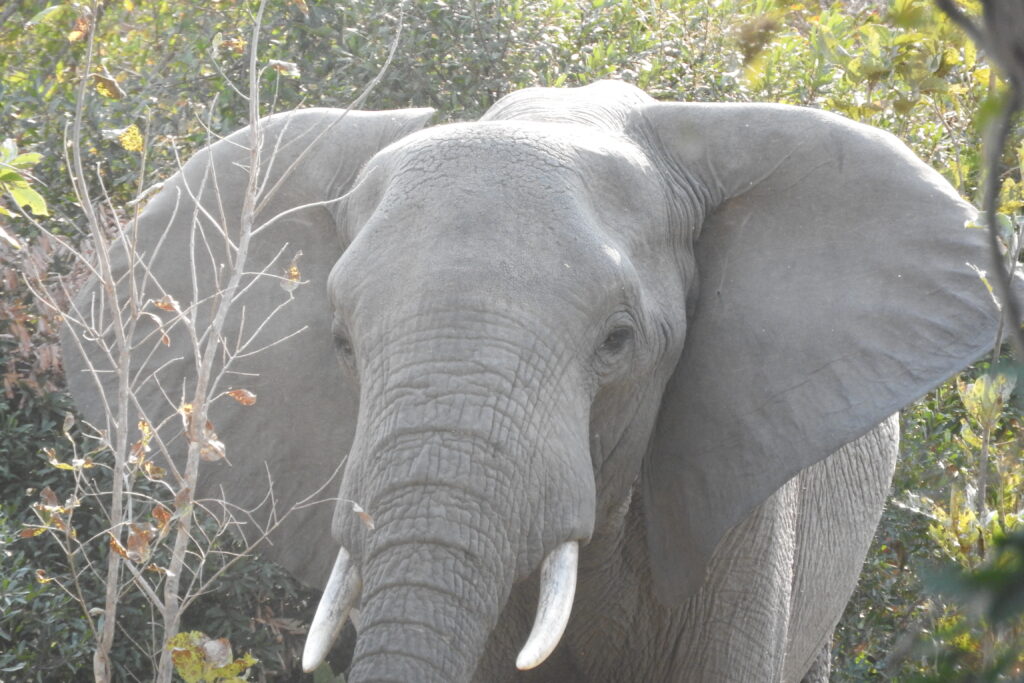
Forest elephants have been found to be more closely related to an extinct Asian elephant than to African Savannah elephants
The first analysis of the genome of the Straight-tusked elephant (a long extinct species) may well rewrite the elephant family tree – while at the current time there are 3 species of elephant (African forest, African bush and Asian Elephant) there are many more long extinct species.
It also suggests that the straight tusked elephant, long thought to be closely related to the Asian elephant, is actually an African elephant species. It does perhaps give another warning, to not classify animals by how they look but by their genes – convergent evolution can often mean species that look similar have little recent genetic links at all.
There has been much argument about whether the African forest is indeed a separate species. This debate must now be over. 2/3 of the African forest elephant has been lost in the last 15 years, we must stop arguing about its genes and get down to the work of saving this species.
African Savannah Elephant
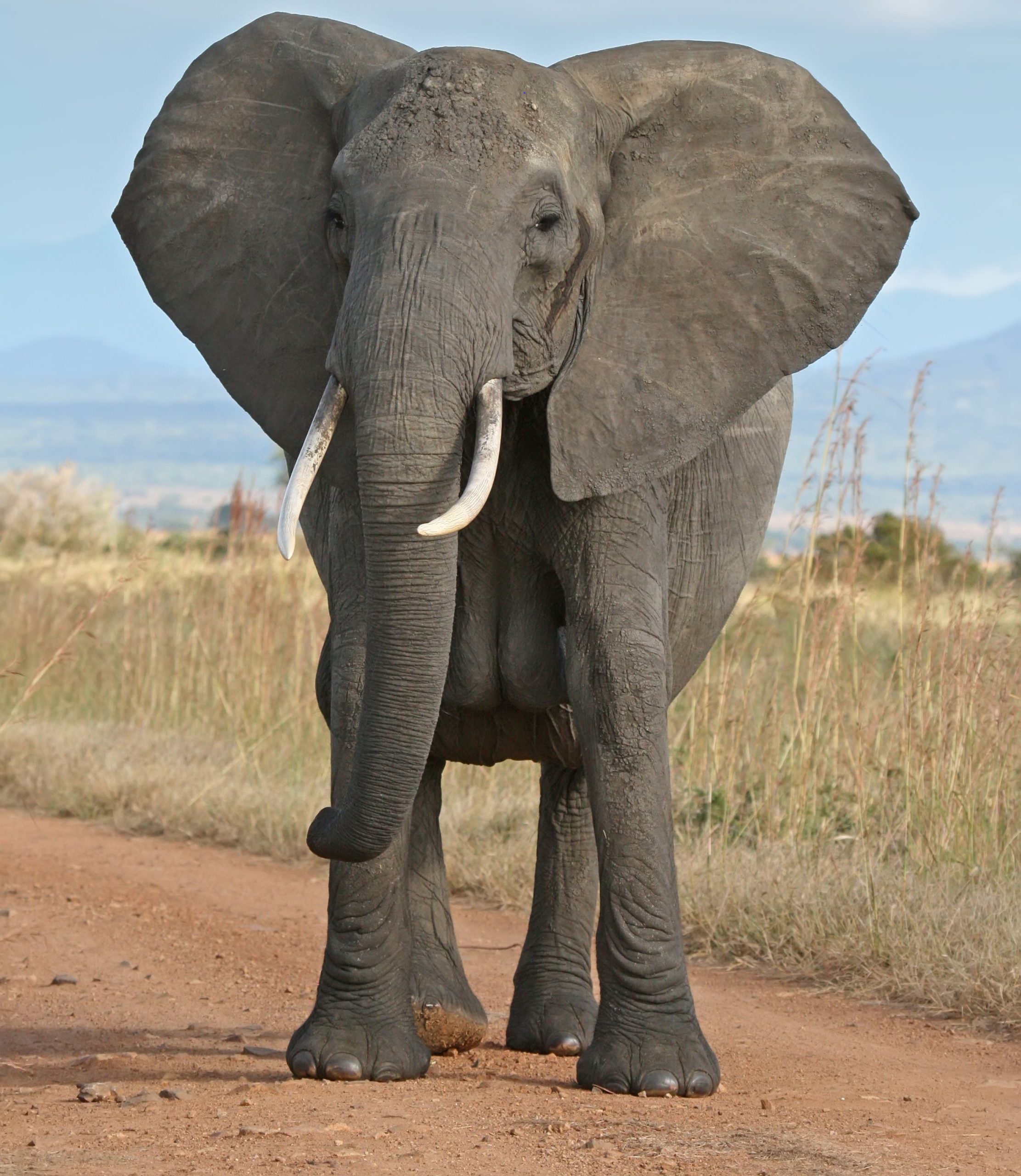
African Savannah Elephant
There are three species of elephant, the African savanna elephant, African forest elephant and the Asian elephant.
With the African species, Forest elephants have declined 86% between 1986 and 2015, African Bush elephants declined 60% 1965 and 2015 leaving just over 400,000.
One of the other issues with poaching is that elephants are very intelligent, and can communicate over long distances. As a result if for instance an elephant is killed in the north of the Kruger, elephants hundreds of miles south will become far more aggressive towards humans and cars. This in turn reduces the number of tourists that are willing to visit the reserve.
Perhaps one encouraging fact, is that the African savannah elephant has enough space for a far larger population if only poaching can come to an end. It is also a simple fact, that any reserve with elephants (like lions) can attract visitors- provided it is well run.
Forest elephants have been found to be more closely related to an extinct Asian elephant than to African Savannah elephants
The first analysis of the genome of the Straight-tusked elephant (a long extinct species) may well rewrite the elephant family tree – while at the
Killing for ivory is increasing the numbers of tusk-less females
Do elephants need tusks? It is a big question. Given the fact that they have them would suggest that they do have a purpose and
UK has once again delayed its ban on Ivory sales
To much fanfare, the British government decided to ban the sale of Ivory 3 years ago. This is certainly a good thing. Unfortunately, they have
Could mammoth help us fight climate change
Roughly speaking, there is 3000 billion tonnes of carbon in the atmosphere. This is a huge number, but then we have to remember that this
Oil fields of Botswana and Namibia threaten 130,000 elephants
While currently only exploratory, oil projects in the ecosystems of Namibia and Botswana potentially threaten the survival of 130,000 elephants – one of Africa’s last
Wild herd of elephants leave their reserve and roam 500km (300 miles) across China
A herd of elephants left their home in March of 2020, and have been roaming free for the last 15 months. In that time they
Species watch
Species watch
All species are important, often reintroductions have failed because a small unnoticed animal was missed. Over time, we will amass pages for as many species as possible. However, just as important is seeing how species are closely related. As such as well as looking at species from a specific ecosystem or family, we will also include family trees of many of the families on earth. It should be noted, that this is to help you find wildlife you wish to see, so will never link to every species. In either way, these links to these will be placed at the top.
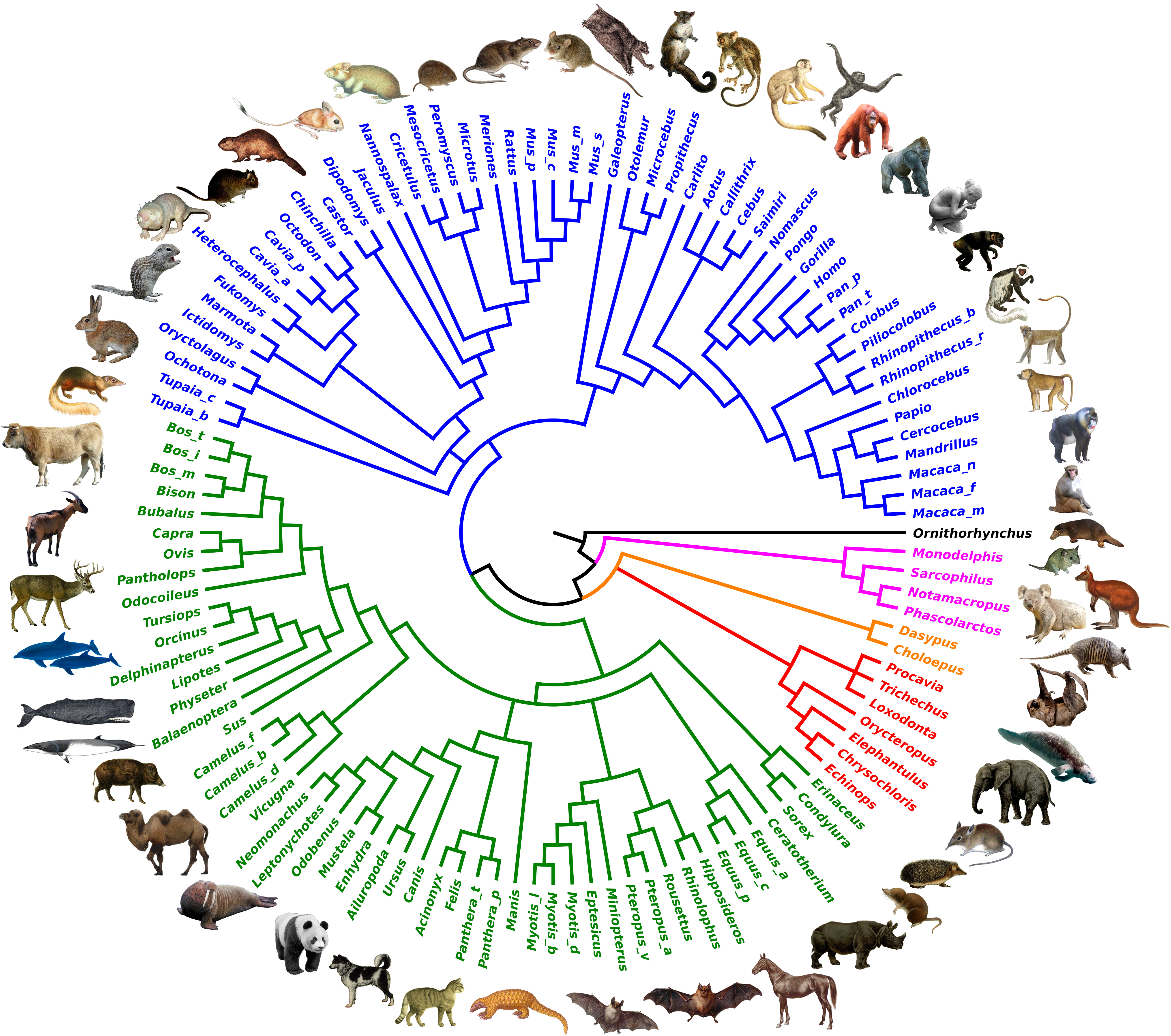
Tiger
Tiger
Tigers – Unlike Lions, tigers are not kings of their ecosystem in the same way as lions. While lions live in prides and lie out in the open, Tigers are solitary (except mothers with their young, or a current breeding pair.
In most instances, male tigers also have no part in caring for young. Amur tigers have a hard time finding food, and there are many documented cases where male tigers will leave kills for their mate and young. This has not been regularly noted amongst other sub species which live in places where food is easier to come across.
We are yet to add any destinations to go see wild tigers, but they will appear on this page, along with a list of articles from the blog on this subject. With a range of different subspecies, which range from relatively secure and growing population, to those on the edge of extinction.
Tigers actually have a similar density in their habitat as a whole to lions (lions are about 5 times as populous, and have a range of about 5 times greater. Tigers roam around 650,000 square km, but with 4500 wild tigers – In other words, overall each species has on average a similar density. Unfortunately, due to their solitary, and often nocturnal habits, it is better to compare tigers to leopards – for many visitors to Africa, while they might see 30 lions in a week, they might see just a couple of Leopards. Having said this, in India, this is recognized, and when a tiger is found you can take a ride on an elephant which will allow you to leave the road and get up and close to an elephant.
Tigers are still found in a variety of countries, however, for the time being, I have not broken them down in this way, as it is more useful to look at them as their former subspecies (I say former because of a decision a few years ago – for more, look below the tiger picture that is below this text).
Below is a list of articles on all subspecies of tiger. Below that is a set of tabs, which will allow you to read about each subspecies. This is because tigers roam around 650,000 square km, however, there is thought that this could be increased by 1.7 million square km. It should be noted, that the current range of the tiger is only around 5% of its historical range.
We are eager to list as many places to see the wild tiger as we possibly can. We hope that each subspecies will eventually have plenty of destinations to see them in the wild. There are many people living alongside these animals, and as such tourism can help these peoples to earn a better income, while they protect these incredible animals.
I should note, that since 2017 there have only been 2 subspecies recognized. That of the continental tigers (Bengal, Amur, Malayan Indochinese, South China and the Caspian) and the so called Sunda tiger (historically from Sumatra Java and Bali, though only surviving in Sumatra). Now, I find it hard to believe that a Bengal tiger would survive in the Amur region of Russia. However, it may well have been found that the differences are not distinct enough to warrant subspecies status. As chance would have it, that would mean that the top line talks about distinct populations of the Continental Tiger, while the bottom line talks about the Sunda tiger populations
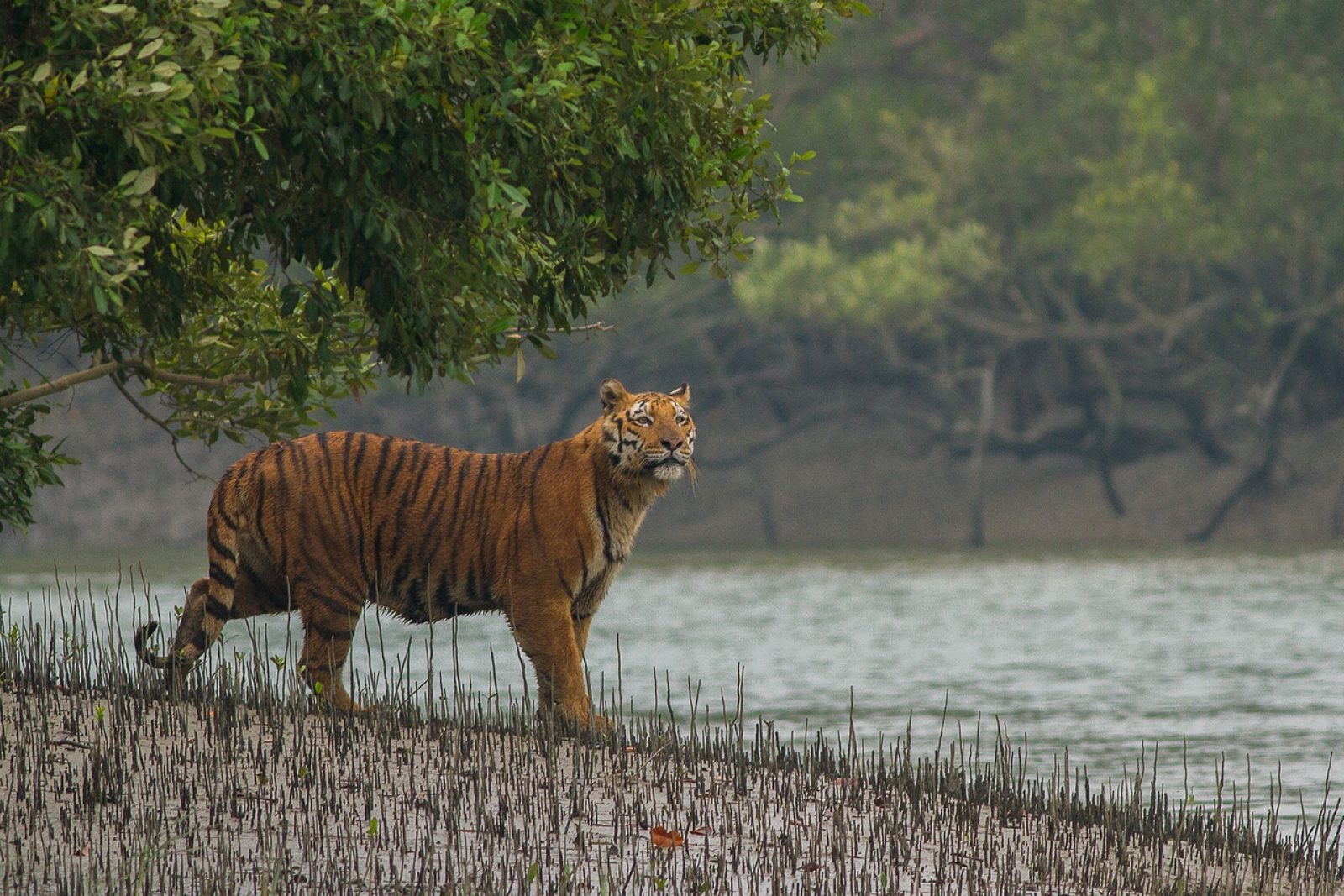
Bengal Tiger
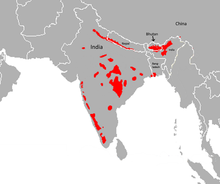 The country with the most tigers is India, hosting around 70% of the remaining tigers, or a little over 3000. However, this is down from 100,000 in 1900. In 2006 the Indian tiger population was as low as just 1411 – there are individual reserves in Africa with more lions in than this number. Given that there are 54 tiger reserves in India, that leaves an average population of just 30 per reserve – translocation will be required to maintain genetically healthy tigers. Formerly working on pug-marks, counting has been replaced with photo identification, as pug marks were overestimating the population (Simlipal reserve in Orissa state claimed 101 tigers in 2004, yet in 2010 a photo count stated 61, and this is thought a a huge over estimate, as the same state government claims just 45 tigers across the state. Sariska and Panna reserves in India are worse with the government having to admit that there are no tigers left (2 reserves of at least 5 so called tiger reserves with none left).
The country with the most tigers is India, hosting around 70% of the remaining tigers, or a little over 3000. However, this is down from 100,000 in 1900. In 2006 the Indian tiger population was as low as just 1411 – there are individual reserves in Africa with more lions in than this number. Given that there are 54 tiger reserves in India, that leaves an average population of just 30 per reserve – translocation will be required to maintain genetically healthy tigers. Formerly working on pug-marks, counting has been replaced with photo identification, as pug marks were overestimating the population (Simlipal reserve in Orissa state claimed 101 tigers in 2004, yet in 2010 a photo count stated 61, and this is thought a a huge over estimate, as the same state government claims just 45 tigers across the state. Sariska and Panna reserves in India are worse with the government having to admit that there are no tigers left (2 reserves of at least 5 so called tiger reserves with none left).
In a list of the best places to see tigers, India will often count more than half of them within its borders. There are many destinations with some tigers, and around half of the
There is currently an estimated 3100 Bengal tigers and they are listed as endangered. However, the total number of wild tigers is around 4500, so around 2/3 live in India.
Poacher suspected of killing 70 Bengal tigers finally caught
- Tim
- June 13, 2021
Tigers are still found in small populations across large parts of Asia, and as such, many millions of people live in relatively close areas to places that protect the wild...
Tiger doubling from 2010 aim review – China
- Tim
- February 15, 2022
China is a country which has done very poorly when it comes to the tiger. Having a great deal of respect for the tiger - with it woven throughout its...
In 2010 the 12 tiger countries agreed to try to double the number of wild tigers by 2022 how did they do? Today India
- Tim
- February 6, 2022
Yesterday I wrote about the problem of tigers living as pets in the USA ( https://seeanimalswild.com/2022/02/04/there-are-more-than-10000-tigers-living-in-the-usa-with-under-4000-in-the-wild/(opens in a new tab)
Today and over the next few days, I am going...
There are more than 10,000 tigers living in the USA, with under 4000 in the wild
- Tim
- February 4, 2022
Back in 2010, the 12 tiger countries in the world came together with an aim to double their tiger population by 2022 the next year of the tiger. This has...
India’s tiger population has doubled in 12 years but other countries have not done so well
- Tim
- December 14, 2020
Back in 2010 the world's tiger countries came together for a conference and declared a goal that by the next year of the tiger (falling in 2022) they would aid...
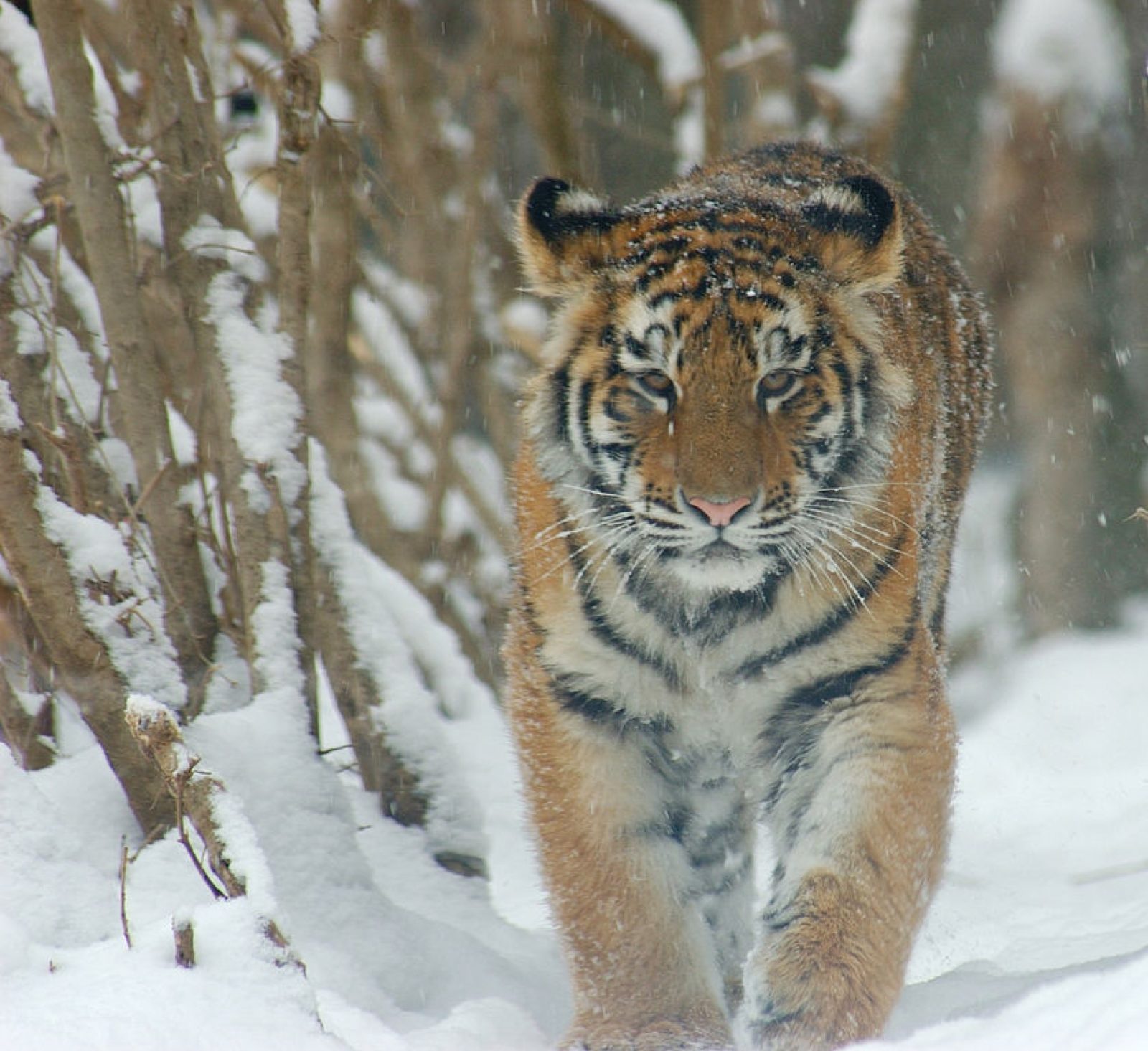
Amur Tiger
 Russia hosts one of the hardest tigers to see. However, there are now around 500 Amur tigers roaming the remote far east of Russia, up from less than 40 in the 1940s, this population has also had great gains.
Russia hosts one of the hardest tigers to see. However, there are now around 500 Amur tigers roaming the remote far east of Russia, up from less than 40 in the 1940s, this population has also had great gains.
Unfortunately there is little habitat for this population to grow much more, however recent genetic analysis has shown that the Amur tiger and the Caspian tiger (which lived in the far west of Russia, as well as various other countries around here like Türkiye (the new spelling of turkey)) is not distinct enough to be a separate subspecies – it is actually the western portion of the Amur tiger. The genetic analysis suggests that the two populations split within the last 200 years.
As such, should space be found here, perhaps Amur tigers should be translocated west to repopulate these long empty tiger ranges. Ili-Balkash Nature Reserve in Kazakhstan covers 4150 square km (1600 square miles). This is large enough for a population of around 120 tigers, Given that even the most absurdly optimistic estimate for tiger numbers in 750, with more reasonable numbers being around 500 (minimum 260) this will over time, boost tiger populations by anywhere between 20% and 50%
Currently, there are thought to be between 265 and 486, the 750 number should not be relied on. They are listed as endangered. It should be noted, that in the 1930s there was just 20-30 Amur tigers , so this is a quite fantastic recovery – the population has increased by 800-2400% in around 100 years. It should be noted, that the Amur leopard has done half of the recovery of the possibly population increase, in just 20 years – showing what is possible. A similar recovery at the current time, would return us to having around 500 Amur leopards.
Much of the recovery, is down to reserves being set up in both China and Russia, for these cats protection. Expansion of these reserves would allow more cats to survive, while the founding and growing of an eco-tourism market could allow locals to benefit from the tigers and leopards living there.
We are eager to work with anyone in the field, do get in touch. Click on list your wild place.
Bringing back the Amur tiger to the western part of its range! (The Caspian tiger)
- Tim
- March 21, 2023
Across the world many species have huge ranges - look at the leopard, found across Africa and much of Asia. It is not a surprise that these animals have a...
Amur tiger back from the brink in China, what can this mean in the future
- Tim
- June 4, 2022
The Amur tiger lives in the far east of Russia, and across the border in china. As little as 15 years ago, the number of Amur tigers living within China...
Indonesia to start a study to see whether the Javan Tiger is actually extinct (44 years after it was declared so)
- Tim
- March 27, 2024
I wrote a few moths ago, about a picture taken in Java, which purported to show a living Javan tiger. As with many similar photos, it was of low resolution,...
Back on the 10th I wrote about the Tiger recovery, here is more details about the Kazakhstan reintroduction: by 2026?
- Tim
- August 22, 2022
The Caspian tiger once lived in 12 countries, from the west in Turkey, to the east in central Asia. Seemingly, across this range, they did not have consistent populations but...
All tiger range countries aimed to double their tiger population, Nepal did one better
- Tim
- August 10, 2022
Back in the last year of the tiger, the tiger range countries came together and aimed to double the number of tigers in the 12 years until the next year...
Can the Malaysian tiger be saved?
- Tim
- May 21, 2022
If is easy to think that we should not be saving subspecies, but instead investing money in conserving other animals that are still threatened.
Unfortunately, this is the wrong way...
Rare black tiger photographed in the wild
- Tim
- February 28, 2022
Big cats have a range of colours that they can be found in. It is certainly true that their standard colour is more common, but in different parts of their...
Could the Caspian tiger return?
- Tim
- February 19, 2022
Declared extinct in 2003, recent genetic analysis shows that the Caspian and Amur tiger are so similar that they cannot be declared as sub species. As such, if the Amur...
Tiger doubling from 2010 aim review – China
- Tim
- February 15, 2022
China is a country which has done very poorly when it comes to the tiger. Having a great deal of respect for the tiger - with it woven throughout its...
Biden expected to sign into law new big cat ownership rules, which will curb or end private ownership
- Tim
- January 16, 2023
It is thought that there is currently about 10,000 big cats in private ownership, often in poor conditions and of no conservation benefit. While as much as 5000 are tigers...
Visit to local zoo, one that I know very well – Marwell zoo
- Tim
- May 10, 2022
If you live in the UK, there is relatively little wildlife to watch (when compared to somewhere like South Africa), which is why zoos are often such popular places.

...

Caspian Tiger
The Caspian tiger was officially declared extinct in 2003, with the last two sightings were in 1958 and 1974 (in Kegeli in Karakalpkstan).
Before its local extinction, this tiger occurred in eastern Turkey, southern Caucasus, northern Iran, Iraq, and in isolated pockets throughout Central Asia as far as north-western China. Whether it will ever be allowed to have a range like this, is anyone’s guess. Clearly, humans were curtailing its range very early on. The only record for instance of its presence in Iraq, was from a 1887, when one was shot near Mosul. The last tiger in Turkey was shot in 1970, with Iran loosing its last in either 1953 or 1958, and the last tiger of Turkmenistan being shot in 1954.
Given the vast historic range of the Caspian tiger, there is many areas that are suitable for reintroduction. It is also possible, that by strategically translocating, it might be possible to reduce the number of tigers in the areas where they share habitat with Amur leopards, which might allow this population to also grow faster. The Caspian tiger is officially extinct, though it should be subsumed into the Amur tiger subspecies. It ranged from the eastern parts of Turkey to the central part of Russia (where it joined with the Amur tiger population. Plans are afoot to re-establish tigers in this range, given that as the Amur tiger is the same sub-species it should thrive as it did in the past.
Bringing back the Amur tiger to the western part of its range! (The Caspian tiger)
- Tim
- March 21, 2023
Across the world many species have huge ranges - look at the leopard, found across Africa and much of Asia. It is not a surprise that these animals have a...
Could the Caspian tiger return?
- Tim
- February 19, 2022
Declared extinct in 2003, recent genetic analysis shows that the Caspian and Amur tiger are so similar that they cannot be declared as sub species. As such, if the Amur...
Back on the 10th I wrote about the Tiger recovery, here is more details about the Kazakhstan reintroduction: by 2026?
- Tim
- August 22, 2022
The Caspian tiger once lived in 12 countries, from the west in Turkey, to the east in central Asia. Seemingly, across this range, they did not have consistent populations but...
All tiger range countries aimed to double their tiger population, Nepal did one better
- Tim
- August 10, 2022
Back in the last year of the tiger, the tiger range countries came together and aimed to double the number of tigers in the 12 years until the next year...
Biden expected to sign into law new big cat ownership rules, which will curb or end private ownership
- Tim
- January 16, 2023
It is thought that there is currently about 10,000 big cats in private ownership, often in poor conditions and of no conservation benefit. While as much as 5000 are tigers...
Decline of the big cats since the start of the 20th century
- Tim
- October 19, 2020
Apex predators are extremely important for ecosystem survival, as they control the numbers of smaller species. Unfortunately these species are doing poorly as a whole. Below I have concentrated on...
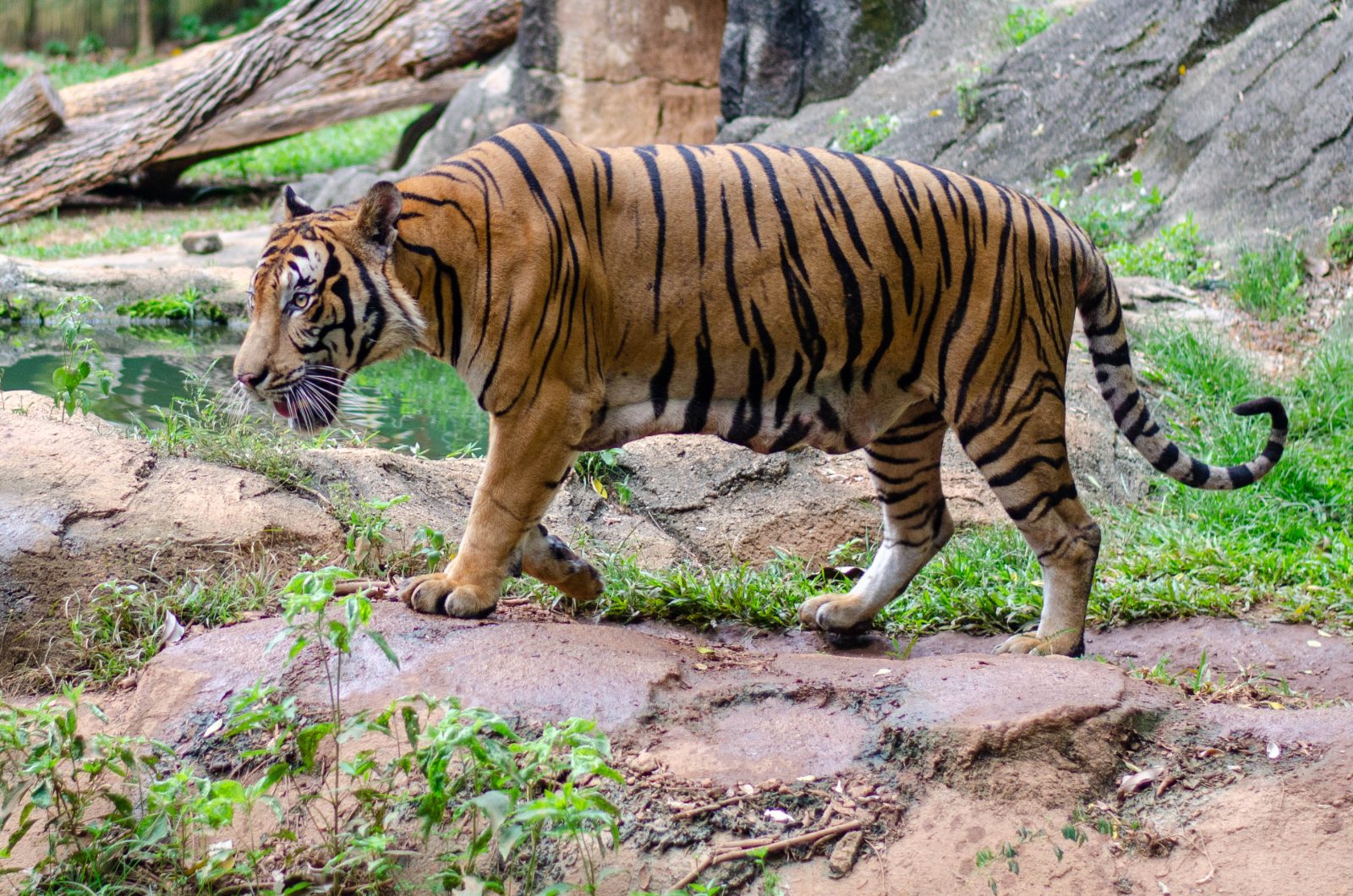
The Malaysian tiger is a subspecies of tiger that is found on the Malaysian peninsular. There are only thought to be 80-120 tigers left in this country, and this has been caused by a variety of factors, including poaching for skin and bones, as well as habitat loss and fracturing, into smaller areas. It is similar to the Indochinese tiger (to the right) though it is smaller, and is the smallest mainland subspecies, though only slightly bigger on average than the Sumatran tiger.
As with elsewhere, increased tourism dollars, might well help local people see value in preserving this species. In the 1950s there were around 3000 of these tigers, however given a density of 1-2 tigers per 100 square km that would require a lot of space. Malaysia protects about 13.3% of its land area which equates to 44,000 square km. .Going by top densities, this is only space for almost 900 tigers (though that is 8 to 9 times the current population) but if poaching were to stop, this situation could change fast.
They are classed as critically endangered
Can the Malaysian tiger be saved?
- Tim
- May 21, 2022
If is easy to think that we should not be saving subspecies, but instead investing money in conserving other animals that are still threatened.
Unfortunately, this is the wrong way...
Tiger doubling from 2010 aim review – Malaysia
- Tim
- February 16, 2022
The Malaysian tiger population (part of the Indochinese sub species) has a small but pretty stable population of tigers of between 250 and 340.
Unfortunately there does not seem to...
Malaysian royal family are a threat to wildlife habitat
- Tim
- November 1, 2021
A company owned by the Pahang states royal family plans to mine iron ore from a forest reserve that currently hosts a variety of important mega fauna, including tigers elephants...
Black leopard sighting Kenya
- Tim
- February 17, 2019

Will Burrard Lucas, a British wildlife photographer, has taken the wildlife jackpot shot and managed to photograph a wild black leopard in Africa, in Laikipia...
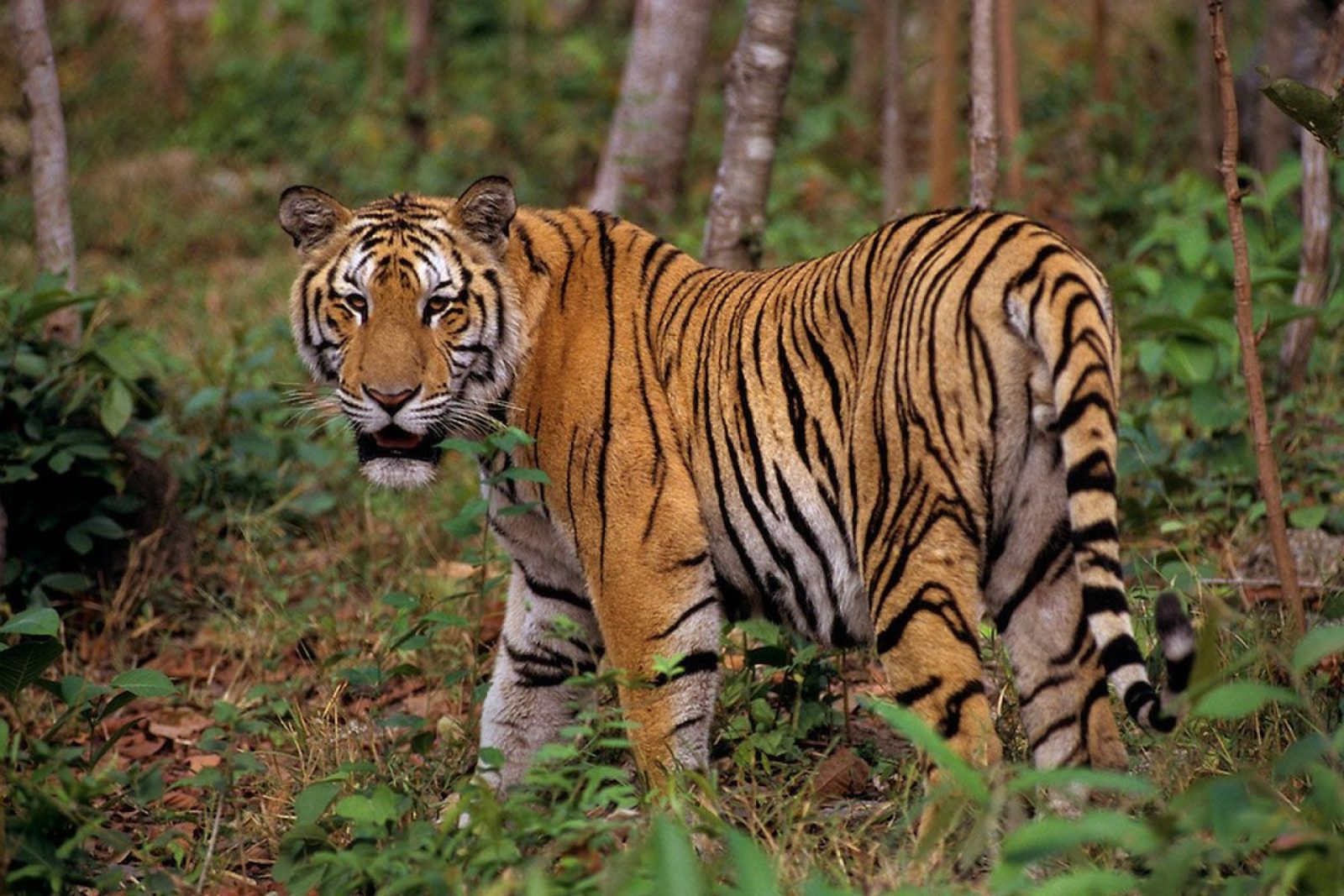
Historically found in Cambodia, China, Laos, Myanmar, Thailand, and Vietnam, this species decline is large. In 2010, the assessment was that there were 250 left in Thailand, with around 85 in Myanmar and perhaps 20 hanging on in Vietnam. It is thought that the population is now just 250. This sub-species is found in Myanmar(85)) and Thiland(237), with a total population of an estimated 342 individuals. Back in 2009-2014 the population was thought to be between 189-252 in this period. Vietnam is only thought to have 5 remaining, while Laos is thought to have 2. Historically, it was also found in Cambodia and China. Historically, it is thought that this species range would have gone further North, potentially up to Chittagong Hill Tracts and Brahmaputra River basin, where the Bengal tiger populations range ended.
In Myanmar, surveys were conducted between 1999 and 2002, confirming the presence of tigers in the Hukawng Valley, Htamanthi Wildlife Sanctuary and in two small areas in the Tanintharyi Region. The Tenasserim Hills is an important area, but forests are harvested there (which means that they may be too much disruption for the tiger to survive here). In 2015, a camera trap took an image of a tiger in the hill forests of Kayin State. Camera trap surveys between 2016 and 2018 revealed about 22 adult individuals in three sites that represent 8% of the potential tiger habitat in the country. How many the rest of the country could support even if they had to be reintroduced is beyond the scope of this.
More than half of the total Indochinese tiger population survives in the Western Forest Complex in Thailand (Covering an area of about 18,000 sq. km. extended into Myanmar border along the Tennaserim Range and abreviated to (WEFCOM)) is considered as the largest remaining forest track in the mainland Southeast Asia that is made up of 17 protected areas (without gaps between them; 11 national parks and 6 wildlife sanctuaries.), especially in the area of the Huai Kha Khaeng Wildlife Sanctuary. This habitat consists of tropical and subtropical moist broadleaf forests. Camera trap surveys from 2008 to 2017 in eastern Thailand detected about 17 adult tigers in an area of 4,445 km2 (1,716 sq mi) in Dong Phayayen–Khao Yai Forest Complex. Several individuals had cubs. The population density in Thap Lan National Park, Pang Sida National Park and Dong Yai Wildlife Sanctuary was estimated at 0.32–1.21 individuals per 100 km2 (39 sq mi). Three subadult tigers were photographed in spring 2020 in a remote region of Thailand that are thought to be dispersing – moving out of areas which they were born into, and trying to find territory of their own.
In Laos, 14 tigers were documented in Nam Et-Phou Louey National Protected Area during surveys from 2013 to 2017, covering four blocks of about 200 km2 (77 sq mi) semi-evergreen and evergreen forest that are interspersed with some patches of grassland. Surveys that have been carried out since, have failed to detect any tigers, and the likelihood is that they have been extirpated as a result of poaching. Given the huge value of dead tigers in Chinese medicine, this is not a big surprise, as the current value for a carcass of a dead tiger is around £67,000 before doing anything with it, the value of it after extracting everything used in Chinese medicine (no evidence that it does anything) is around 5 times higher or £335,000. That is a huge windfall, but given that the average salary in Thailand is about £2200 a year (meaning that while many earn a great deal more than this, also many earn much less). 335,000, therefore represents perhaps 150 years of average salary. This is another place, where tourism can help. A thriving tourism industry will bring well paid jobs to many, and will therefore, not only preserve the tiger, but has the capacity of lifting many communities out of destitution.
In eastern Cambodia, tigers were last recorded in Mondulkiri Protected Forest and Virachey National Park during surveys between 1999 and 2007. In 2016, the Cambodian government declared that the tiger was “functionally extinct”. In April 2023, India signed a memorandum of understanding with Cambodia to assist the country with the tiger’s reintroduction. At least 90 acres (36 ha) of the Cardamom Mountains of Tatai Wildlife Sanctuary could be used to host Bengal tigers (though this if a correct number is not going to do much for a wild tiger).
From the 1960s and earlier, the Indochinese tiger occurred throughout the mountains in Vietnam, even in the midlands and Islands. In the report of the Government of Vietnam at the Tiger Forum in 2004, there would be tigers in only 17 provinces and they were living in fragmented and severely degraded forest areas. Tigers were still present in 14 protected areas in the 1990s, but none have been recorded in the country since 1997. There is news of its extinction in both countries. In Laos, no tiger has been seen since 2013, when its populations were estimated at only two, and these two individuals simply vanished shortly after 2013 from Nam Et-Phou Louey National Protected Area, denoting they were most likely killed either by snare or gun. In Vietnam, a 2014 IUCN Red List report indicated that tigers were possibly extinct in Vietnam.
In China, it occurred historically in Yunnan province and Mêdog County, where it probably does not survive today. Thus, probably the Indochinese tiger now only survives in Thailand and Myanmar. In Yunnan’s Shangyong Nature Reserve, three individuals were detected during surveys carried out from 2004 to 2009.
In Thailand’s Huai Kha Khaeng Wildlife Sanctuary, 11 individual tigers were equipped with GPS radio collars between June 2005 and August 2011. Females had a mean home range of 70.2km2 (27.1 sq mi) and males of 267.6km2 (103.3sq mi).
Between 2013 and 2015, 11 prey species were identified at 150 kill sites. They ranged in weight from 3 to 287 kg. Sambar deer, banteng, gaur, and wild boar were most frequently killed, but also remains of Asian elephant calves, hog badger, Old World porcupine, muntjac, serow, pangolin, and langur species were identified.
The primary threat to the tiger is poaching for the illegal wildlife trade. Tiger bone has been an ingredient in traditional Chinese medicine for more than 1,500 years and is either added to medicinal wine, used in the form of powder, or boiled to a glue-like consistency. More than 40 different formulae containing tiger bone were produced by at least 226 Chinese companies in 1993. Tiger bone glue is a popular medicine among urban Vietnamese consumers.
Between 1970 and 1993, South Korea imported 607 kg of tiger bones from Thailand and 2,415 kg from China between 1991 and 1993. Between 2001 and 2010, wildlife markets were surveyed in Myanmar, Thailand, and Laos. During 13 surveys, 157 body parts of tigers were found, representing at least 91 individuals. Whole skins were the most commonly traded parts. Bones, paws, and penises were offered as aphrodisiacs in places with a large sex industry. Tiger bone wine was offered foremost in shops catering to Chinese customers. Traditional medicine accounted for a large portion of products sold and exported to China, Laos, and Vietnam. Between 2000 and 2011, 641 tigers, both live and dead, were seized in 196 incidents in Thailand, Laos, Vietnam, Cambodia, and China; 275 tigers were suspected to have leaked into trade from captive facilities. China was the most common destination of the seized tigers.
In Myanmar’s Hukaung Valley, the Yuzana Corporation, alongside local authorities, has expropriated more than 200,000 acres (81,000 ha) of land from more than 600 households since 2006. Much of the trees have been logged, and the land has been transformed into plantations. Some of the land taken by the Yazana Corporation had been deemed tiger transit corridors. Without this land, smaller reserves can instantly become incapable of supporting tigers longterm. These are areas of land that were supposed to be left untouched by development in order to allow the region’s Indochinese tigers to travel between protected pockets of reservation land.
Since 1993, the Indochinese tiger has been listed on CITES Appendix I, making international trade illegal. China, South Korea, Vietnam, Singapore, and Taiwan banned trade in tigers and sale of medicinal derivatives. Manufacture of tiger-based medicine was banned in China, and the open sale of tiger-based medicine reduced significantly since 1995.
Patrolling in Thailand’s Huai Kha Khaeng Wildlife Sanctuary has been intensified since 2006 so that poaching appears to have been reduced, resulting in a marginal improvement of tiger survival and recruitment. By autumn 2016, at least two individuals had dispersed to adjacent Mae Wong National Park; six cubs were observed in Mae Wong and the contiguous Khlong Lan National Park in 2016, indicating that the population was breeding and recovering.[43]
In Thailand and Laos, this tiger is considered Endangered, while it is considered Critically Endangered in Vietnam and Myanmar. Of course, if all this is correct, then some of these countries should amend their listing to extinct.
The Indochinese tiger is the least represented in captivity and is not part of a coordinated breeding program. As of 2007, 14 individuals were recognized as Indochinese tigers based on genetic analysis of 105 captive tigers in 14 countries. This is no where near enough to be able to do a reintroduction.
I will hope to add links to help arrange travel to see this species, do get in touch if you can help
More than half of the total Indochinese tiger population survives in the Western Forest Complex in Thailand, especially in the area of the Huai Kha Khaeng Wildlife Sanctuary.
They are considered endangered in Thailand and critically endangered in Myanmar and Vietnam
Tiger doubling from 2010 aim review – Malaysia
- Tim
- February 16, 2022
The Malaysian tiger population (part of the Indochinese sub species) has a small but pretty stable population of tigers of between 250 and 340.
Unfortunately there does not seem to...
Tiger doubling from 2010 aim review – China
- Tim
- February 15, 2022
China is a country which has done very poorly when it comes to the tiger. Having a great deal of respect for the tiger - with it woven throughout its...
Tiger doubling aim from 2010 review – Vietnam
- Tim
- February 9, 2022
In 2011 vietnams population of tigers was estimated at 20. These are of the Indochinese sub species, unfortunately with only around 350 left across all countries it lives in, this...
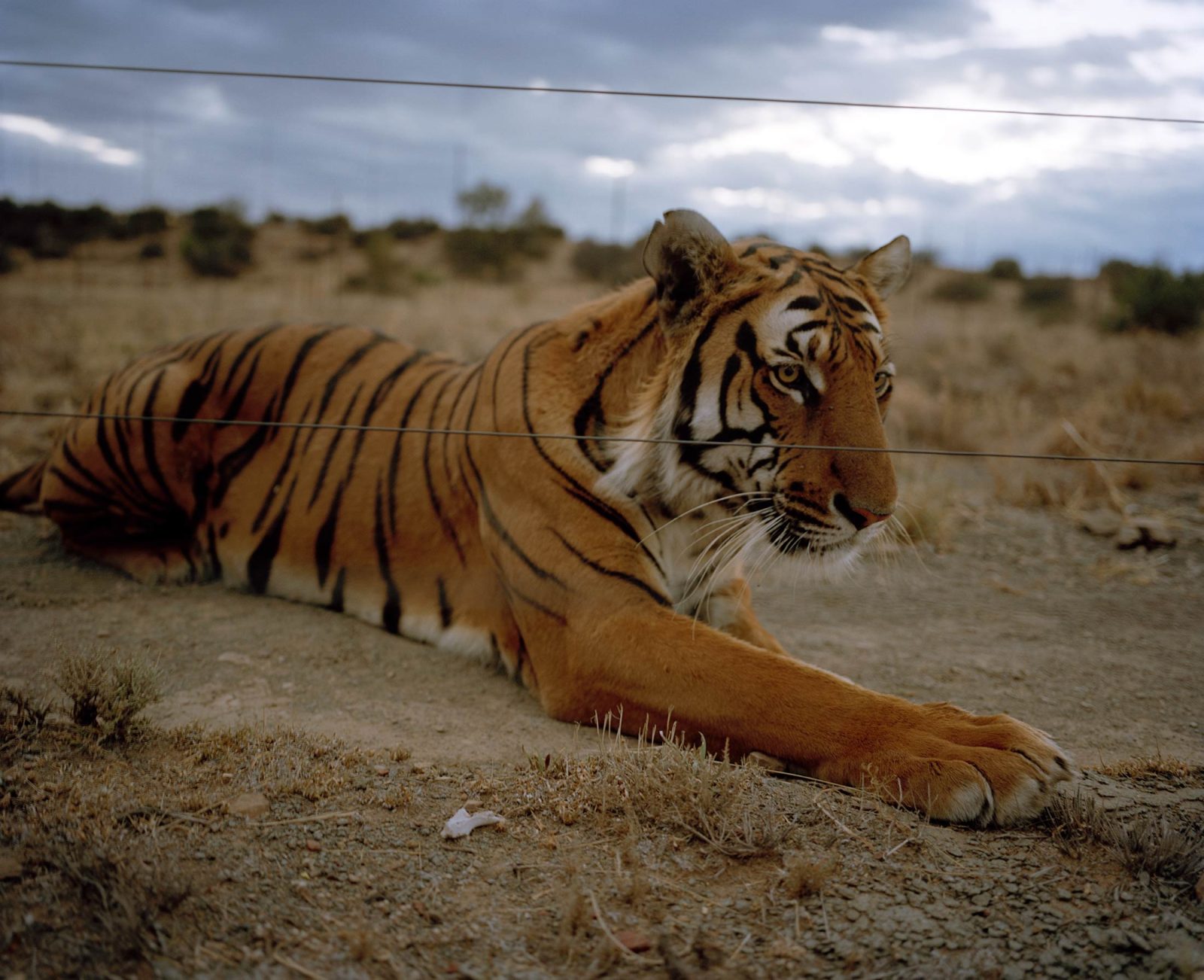
South China Tiger
This subspecies is definitely extinct in the wild. It was considered critically endangered from 1996, but none have been seen since the early 1990s. The human population is large in this area.
The captive South China tiger population is thought to be around 150, though it is thought that few if any are pure South China tiger.
Laohu Valley Reserve, Free State in South Africa, is a 300 square km reserve which has been used to rewild the first of these tigers. There are now thought to be around 18 that could return to South China, and the plan was for them to return in 2008. Unfortunately, the situation there, has not improved, and so there is still no place for them to be reintroduced. The couple who paid for, and instigated this plan have since divorced, so it is unclear if the animals will ever return home.
They are officially extinct in the wild – however, given their presence both in captivity, and in small reserves in the wild, it is clear that in the future they could return.
Tiger doubling from 2010 aim review – China
- Tim
- February 15, 2022
China is a country which has done very poorly when it comes to the tiger. Having a great deal of respect for the tiger - with it woven throughout its...
There are more than 10,000 tigers living in the USA, with under 4000 in the wild
- Tim
- February 4, 2022
Back in 2010, the 12 tiger countries in the world came together with an aim to double their tiger population by 2022 the next year of the tiger. This has...
Decline of the big cats since the start of the 20th century
- Tim
- October 19, 2020
Apex predators are extremely important for ecosystem survival, as they control the numbers of smaller species. Unfortunately these species are doing poorly as a whole. Below I have concentrated on...
Species watch
- Tim
- May 11, 2022
I am intending to make this into a new set of articles that will appear on this website. Obviously, these species will not be the only ones that are covered...
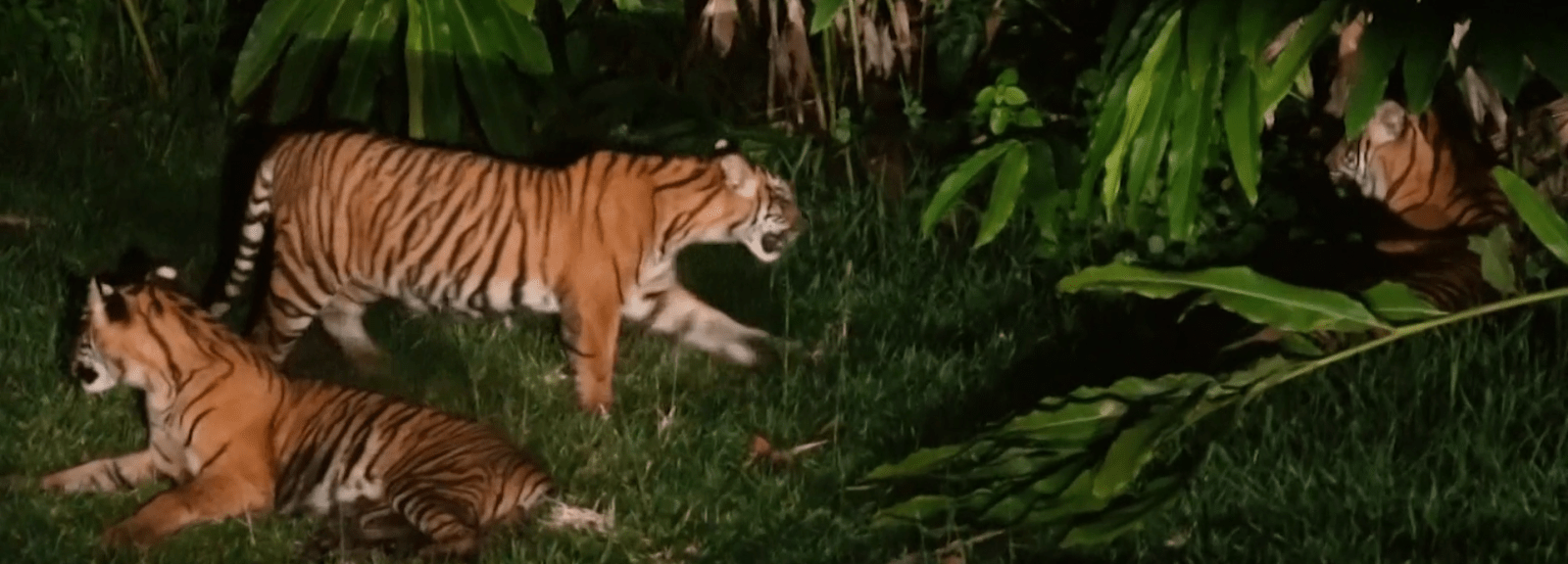
Sumatra is the only Indonesian island which still houses wild tigers. There are currently thought to be 500-600 left in the wild (in 2017 the population was estimated at around 618 plus or minus 290 – a huge error margin).
As with elsewhere, habitat fragmentation is a big problem for this cat. The largest protected reserve is Gunung Leuser National Park. Around 500 of the islands tigers live in reserves, with another 100 living outside protected areas. Sightings are rare, but if you trek in the park, they are possible. Indeed, it is the last place on earth where elephants rhinos tigers and orangutans live alongside each other. There are also sun bears, making a fascinating if difficult big 5. The area also hosts some of the last clouded leopards in the world,
They are classed as critically endangered. while their population has grown in the last few decades, deforestation makes further growth hard, and further losses likely.
Below, is our usual list of any articles that might have been written on this subject, and below that is a documentary on Sumatran tigers. Below both of these, we will add any links which might help you see this animal in the wild (or indeed visit its wild home, giving locals more incentive to protective for the future)
A haven for the critically endangered Sumatran Tiger – Tambling nature conservation
- Tim
- June 21, 2023
https://www.cnn.com/videos/tv/2023/04/04/mission-tiger-sumatra-tambling-1-hnk-spc-intl.cnn
Above is a link to a short but fascinating video which CNN did about an ex hunter who is trying to atone for his former behaviour.
It is under...
Couple who tried to buy a Savannah cat in France, instead were giving a Sumatran tiger cub
- Tim
- October 18, 2020
Savannah cats are a cross between a domestic cat and a serval.
On the left is a savannah cat, on the right is a serval cat.
A serval cat is...
Sumatra is building good motorways across the island leading to the photo of a Sumatran tiger on the edge of the new motorway
- Tim
- March 21, 2020
Workers building a motorway through the Sumatran rainforest got a beautiful shot of a tiger before it ran back into the forest. Due to the destruction of its home the...
Indonesia to start a study to see whether the Javan Tiger is actually extinct (44 years after it was declared so)
- Tim
- March 27, 2024
I wrote a few moths ago, about a picture taken in Java, which purported to show a living Javan tiger. As with many similar photos, it was of low resolution,...
Is the Javan tiger extinct? Update on image
- Tim
- January 22, 2024
- 2
This is a post origially put out 2 years ago, however, I found the video had not worked, so here it is again.
There are still sizable areas of protected...
Can the Malaysian tiger be saved?
- Tim
- May 21, 2022
If is easy to think that we should not be saving subspecies, but instead investing money in conserving other animals that are still threatened.
Unfortunately, this is the wrong way...
Snares set by poaching are still threatening Sumatran Rhino, now with only about 80 left
- Tim
- November 25, 2020
The leuser ecosystem on the island of Sumatra, is home to a fascinating range of animals, not found together anywhere else. In particular, this ecosystem supports tigers orangutans elephants and...
Decline of the big cats since the start of the 20th century
- Tim
- October 19, 2020
Apex predators are extremely important for ecosystem survival, as they control the numbers of smaller species. Unfortunately these species are doing poorly as a whole. Below I have concentrated on...
Can Tesso National Park in Indonesia be saved and restored?
- Tim
- July 15, 2018
Species watch
- Tim
- May 11, 2022
I am intending to make this into a new set of articles that will appear on this website. Obviously, these species will not be the only ones that are covered...
Two baby rhino born in Java in the species last remaining habitat
- Tim
- February 17, 2022
There are only around 60 rhino left in the wild. They live in Ujung Kulon National Park. To put that in perspective, that is an increase of 3.3%.
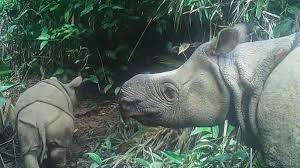
Indonesias leading University has proposed classifying Palm oil as a forest crop – This is insane, read on to find more – urgent condemnation needed
- Tim
- January 11, 2022
This proposal would mean that Indonesia could cut down all its rainforest and replace them with Palm Oil, and would have engaged in zero deforestation.
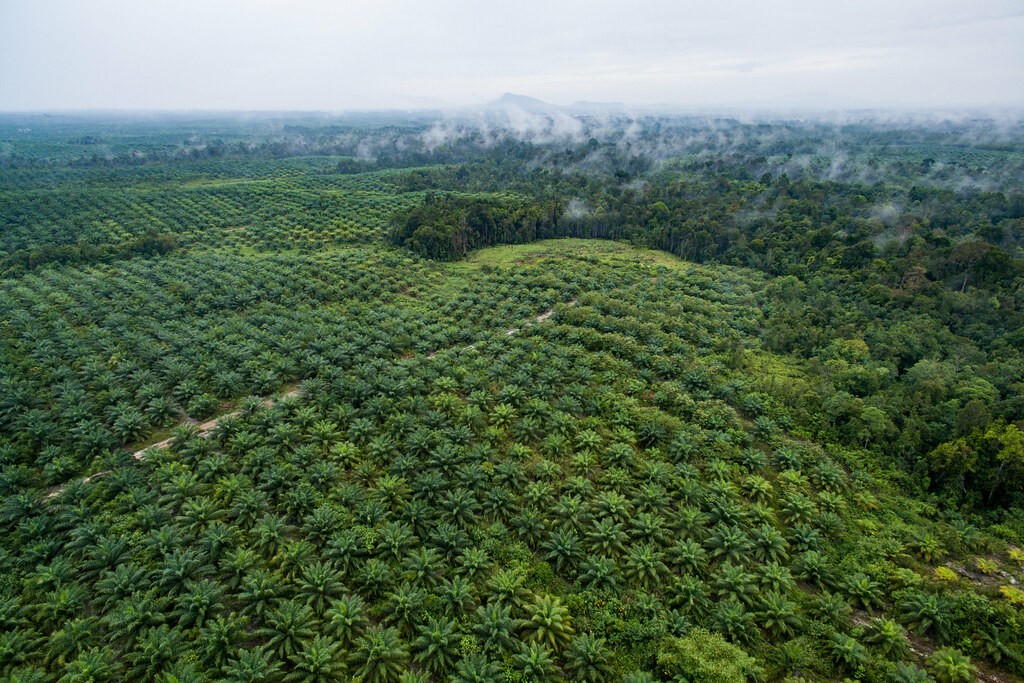
This...
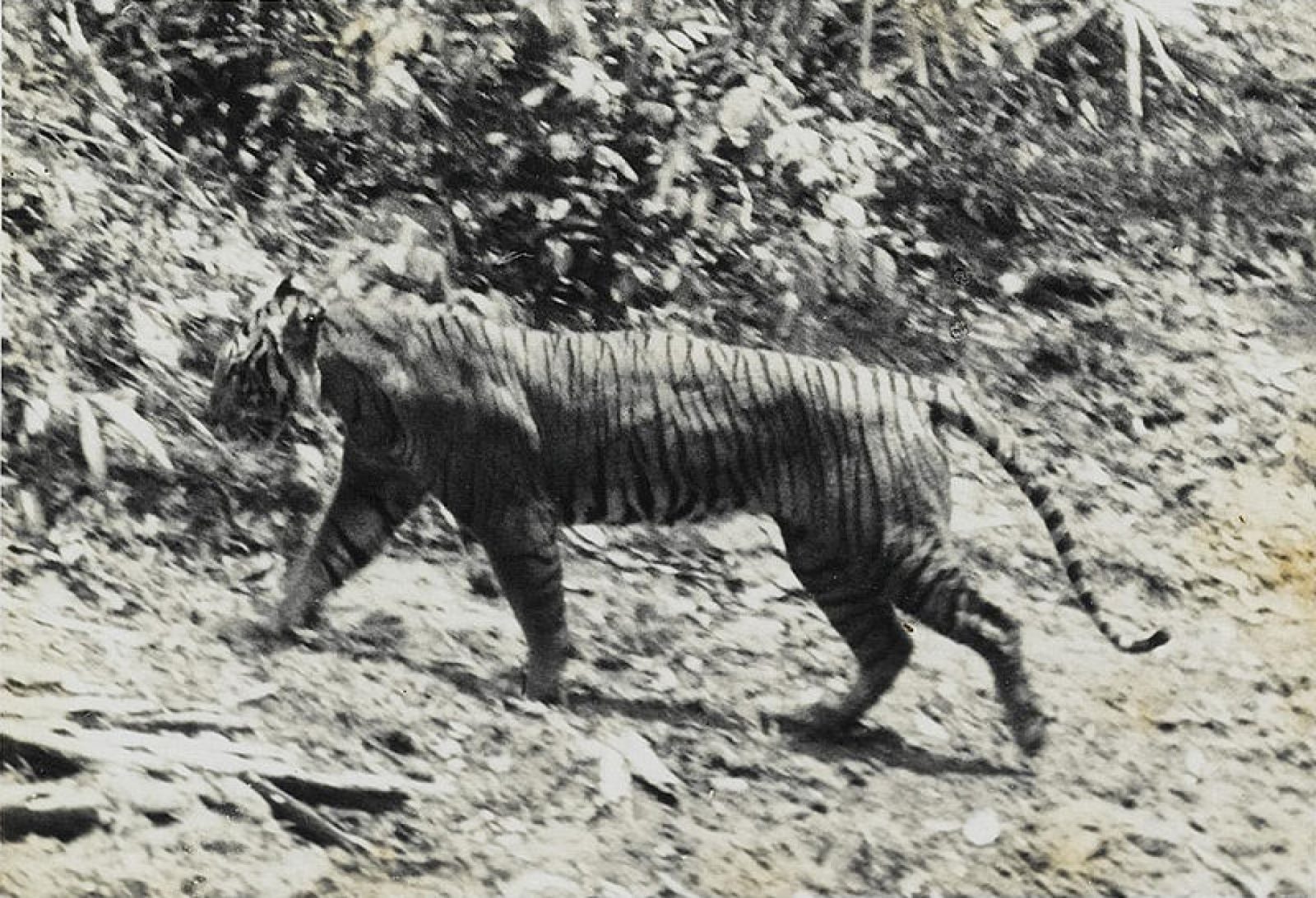
Although only officially declared extinct in 2003, the last reliable sightings of tracks and the animal occurred in 1976.
Ujung Kulon National Park hosts the last Javan rhino, thought to number just 76. Other local species include carnivores such as leopard, wild dog (dhole), leopard cat, fishing cat, Javan mongoose and several species of civets. It is also home to three endemic primate species; the Javan gibbon, Javan leaf monkey and silvered leaf monkey. Over 270 species of birds have been recorded and terrestrial reptiles and amphibians include two species of python, two crocodile species and numerous frogs and toads. This habitat may well suit tigers in the future. However, the tiger population in Sumatra must first recover, and this may never happen, given the continued clearing of the rainforest. A century ago, there were also orangutans.
They are classed as extinct, and while there are occasional possible sightings, it is highly unlikely that any remain.
Indonesia to start a study to see whether the Javan Tiger is actually extinct (44 years after it was declared so)
- Tim
- March 27, 2024
I wrote a few moths ago, about a picture taken in Java, which purported to show a living Javan tiger. As with many similar photos, it was of low resolution,...
Is the Javan tiger extinct? Update on image
- Tim
- January 22, 2024
- 2
This is a post origially put out 2 years ago, however, I found the video had not worked, so here it is again.
There are still sizable areas of protected...
Two baby rhino born in Java in the species last remaining habitat
- Tim
- February 17, 2022
There are only around 60 rhino left in the wild. They live in Ujung Kulon National Park. To put that in perspective, that is an increase of 3.3%.

Illegal trade in Indonesian leopards is booming
- Tim
- August 17, 2021
The country of Indonesia consists of many islands. Due to their relative size, these islands have led to many subspecies of animals adapting.
In the past tigers existed on at...
Species watch
- Tim
- May 11, 2022
I am intending to make this into a new set of articles that will appear on this website. Obviously, these species will not be the only ones that are covered...
Decline of the big cats since the start of the 20th century
- Tim
- October 19, 2020
Apex predators are extremely important for ecosystem survival, as they control the numbers of smaller species. Unfortunately these species are doing poorly as a whole. Below I have concentrated on...
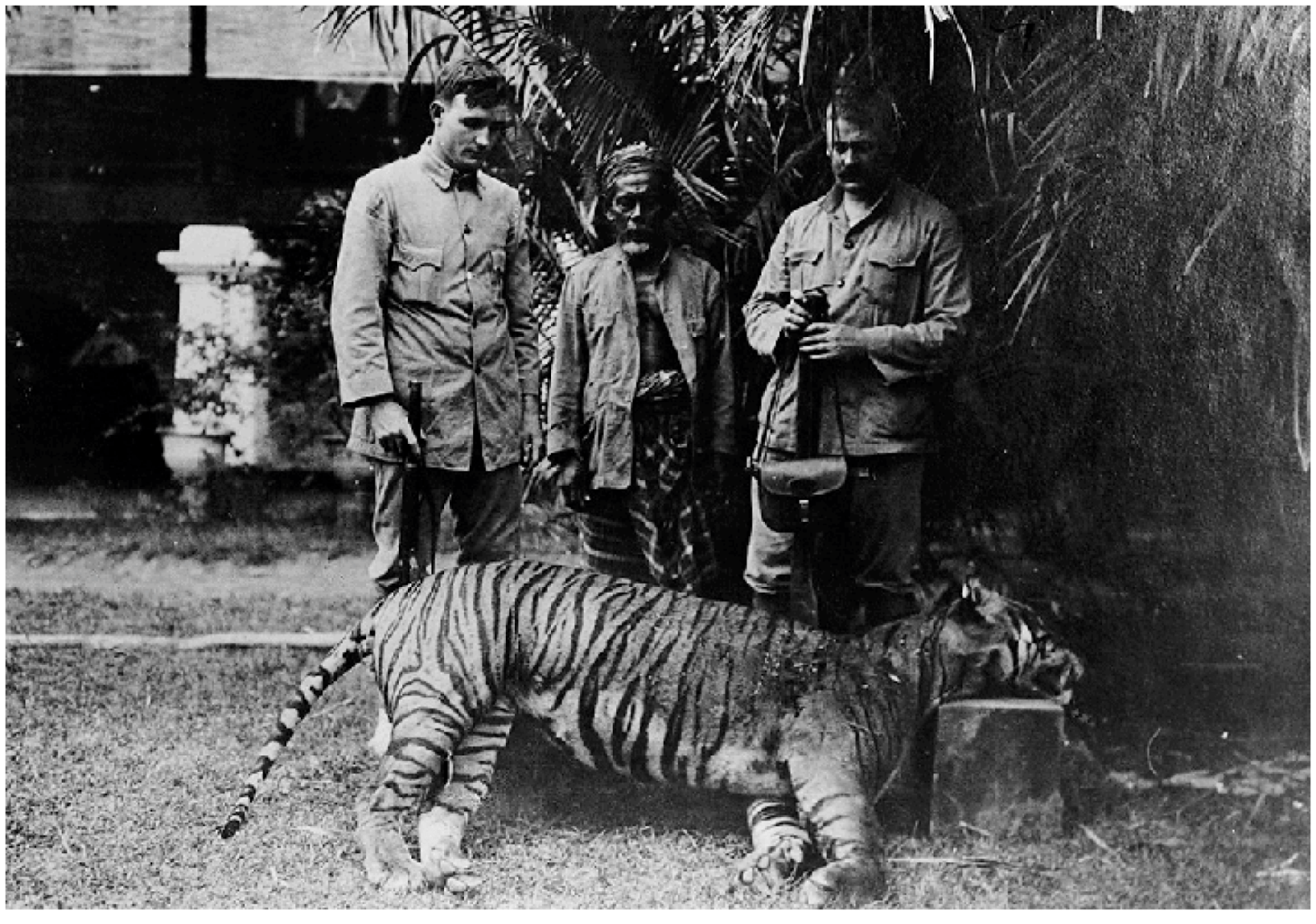
The Bali tiger was lost in 1937 when it was shot. It is thought that they persisted in low numbers as late as the 1970s, though they were not declared extinct until 2008. Around 1250 square km remain on the island of rainforest, suggesting that it is another potential destination for the Sumatran tiger. Much work needs to be done first, both on Bali and on Sumatra, if this is to happen
Species is officially extinct
Tiger news in general
Tiger doubling from 2010 aim review – Sumatra
- Tim
- February 13, 2022
Indonesia is a archipelago of islands. Once connected to the Asian mainland, animals were able to make their way along the peninsular. When sea levels rose in the ancient past...
Illegal trade in Indonesian leopards is booming
- Tim
- August 17, 2021
The country of Indonesia consists of many islands. Due to their relative size, these islands have led to many subspecies of animals adapting.
In the past tigers existed on at...
Decline of the big cats since the start of the 20th century
- Tim
- October 19, 2020
Apex predators are extremely important for ecosystem survival, as they control the numbers of smaller species. Unfortunately these species are doing poorly as a whole. Below I have concentrated on...
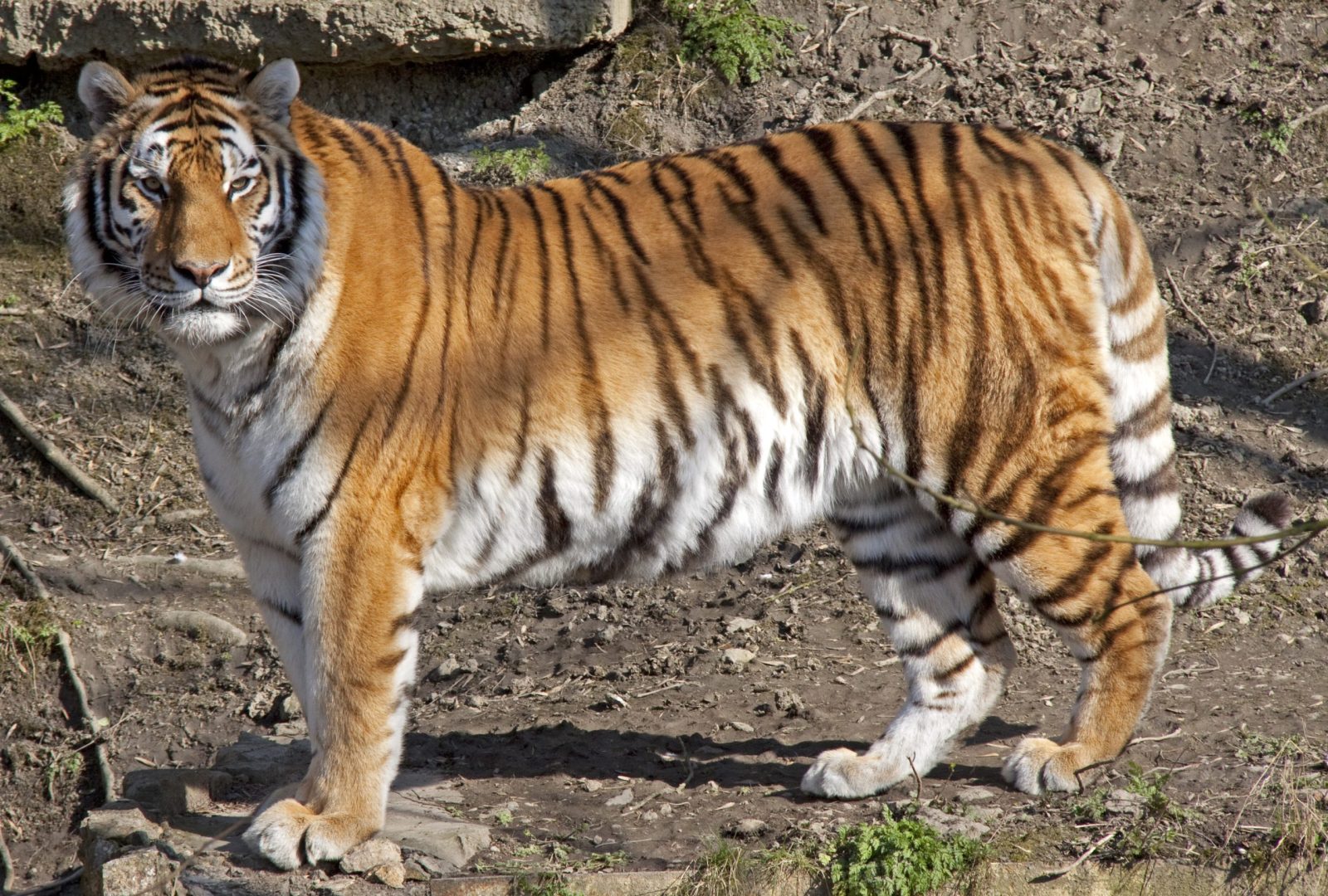
Killing for ivory is increasing the numbers of tusk-less females
Do elephants need tusks? It is a big question. Given the fact that they have them would suggest that they do have a purpose and therefore that life without them may be harder.
In Gorogosa national park in Mozambique, tuskless females became more common after ivory poaching become common during their 15 year civil war.
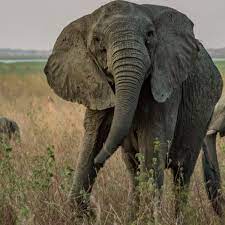
Being born tuskless, is not an unnatural affair. Indeed, some females have always been missing tusks. However, during the war 90% of the parks elephants were poached. If an elephant is chosen for its tusks over a period of 15 years, this gives elephants born tuskless a significant advantage. Importantly, with a death rate of 90% even if the tusks make life easier in some way, they are still going to loose them.
Elephants are dangerous animals that need to be treated with respect at the best of times. They can do much damage with their trunks and likewise throwing their weight around can easily overturn a car, As a result, while loss of tusks may be an impediment (and would appear to be so, as post poaching periods tusks usually return) it is clearly not a death sentence – and as in these periods, having tusks IS, it is not surprising that the few born without rapidly come to dominate the population.
UK has once again delayed its ban on Ivory sales
To much fanfare, the British government decided to ban the sale of Ivory 3 years ago. This is certainly a good thing. Unfortunately, they have just delayed its introduction again – and we are already 3 years after this law was supposed to come into effect. Admittedly, this time the delay is only supposed to be for 2 months, but it sends the wrong message.
Forest and Savannah elephant populations across west and east Africa have been decimated over the last decade or two.

Ministers claim that background work has not been carried out, but given they have had 3 years this is inexcusable. Someone should be fired for this.
At the moment elephants are being killed at the rate of one every 15-25 minutes or 50-100 a day. The UK is the largest exporter of Ivory. Also much ivory from recently poached animals is passed off as antique – avoiding the rules.
The EU is now considering acting on this pressing issue. Our original advance has been destroyed, and we now look like we are incompetent.
It is currently down to issues creating the technical standards for exempting legal ivory.
My proposal would be to ban all ivory sale until this system was in place. This would put pressure on people to finish it quickly (and I would be surprised if it wasn’t solved very fast).
Lord Goldsmith wrote in a letter that he committed to enacting the bill by the end of 2022, though similar things were said 3 years ago.




